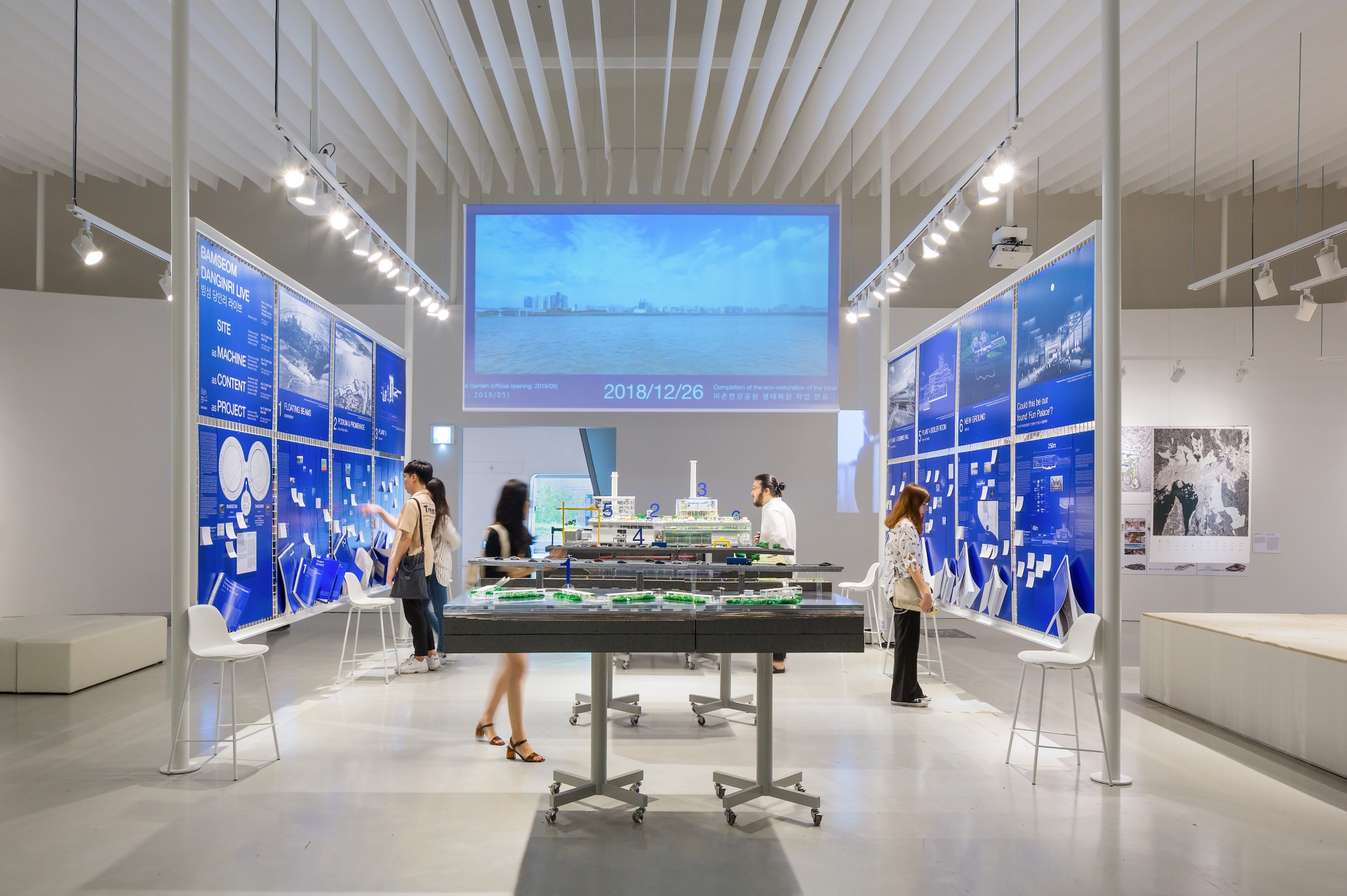The Second Seoul Biennale of Architecture and Urbanism
The Seoul Biennale of Architecture and Urbanism (hereinafter Seoul Biennale), first unveiled in 2017, has now returned after a two-year hiatus. The Seoul Biennale continues with the previous Biennale’s exhibiting format. This time, it is once again a locationfocused Biennale. The exhibitions and events, will take place during the same period throughout Seoul, including Dongdaemun Design Plaza (DDP), Seoul Hall of Urbanism & Architecture, Donuimun Museum Village, Sewoon Sangga, and Seoul Museum of History. Lim Jaeyong (principal, OCA) and Francisco Sanin (professor, Syracuse University) are to take the lead in the Seoul Biennale this year. Presented by the two co-directors, the theme of this year is ‘Collective City’. The Seoul Biennale said that the Collective City means ‘a single city formed by the gathering of the elements such as natural resource, urban infrastructure, transportation, politics, and culture’. The description of the theme seems somewhat abstract and ambiguous. However, since an event like a Biennale is a dedicated place for bringing together and sharing various thoughts from all over the world, the Seoul Biennale may have chosen a concept that is comprehensive and multifaceted, in order to collect each individual meaning or idea held in different cities throughout the world. In the themed lecture on the 8th of September, Francisco Sanin stressed that ‘rather than questioning “what” the Collective City is, it is more important to think about “why” we need to reconsider the Collective City at this point’. According to Sanin, the city must be reclaimed by its people, and notions of urbanism and architectural design must be redefined in consideration of their potential. Addressing problems such as housing shortages, climate change, and the refugee crisis, he pointed to the following question: ‘does the city exist today for everyone?’ He argued that we must move away from the city dominated by a given system and return it to a city for the people. Lim Jaeyong also stated that the Collective City is ‘a human-centred city, where citizens themselves participate in the process of forming a new kind of city and where citizens can equally enjoy the city’s public spaces’, therefore addressing the meanings that these words carry rather than completely redefining those words. The co-directors’ explanation is in line with the two goals of the Seoul Biennale: to make a leap forward towards a global platform for domestic and foreign professionals, and to become a public, participatory exhibition to which citizens can contribute and create together. This year’s Seoul Biennale consists of four major exhibition programmes. Thematic exhibition, cities exhibition, global studios, and live projects have been organised by individual curators and approach the theme of Collective City from slightly different perspectives or methods of approach.
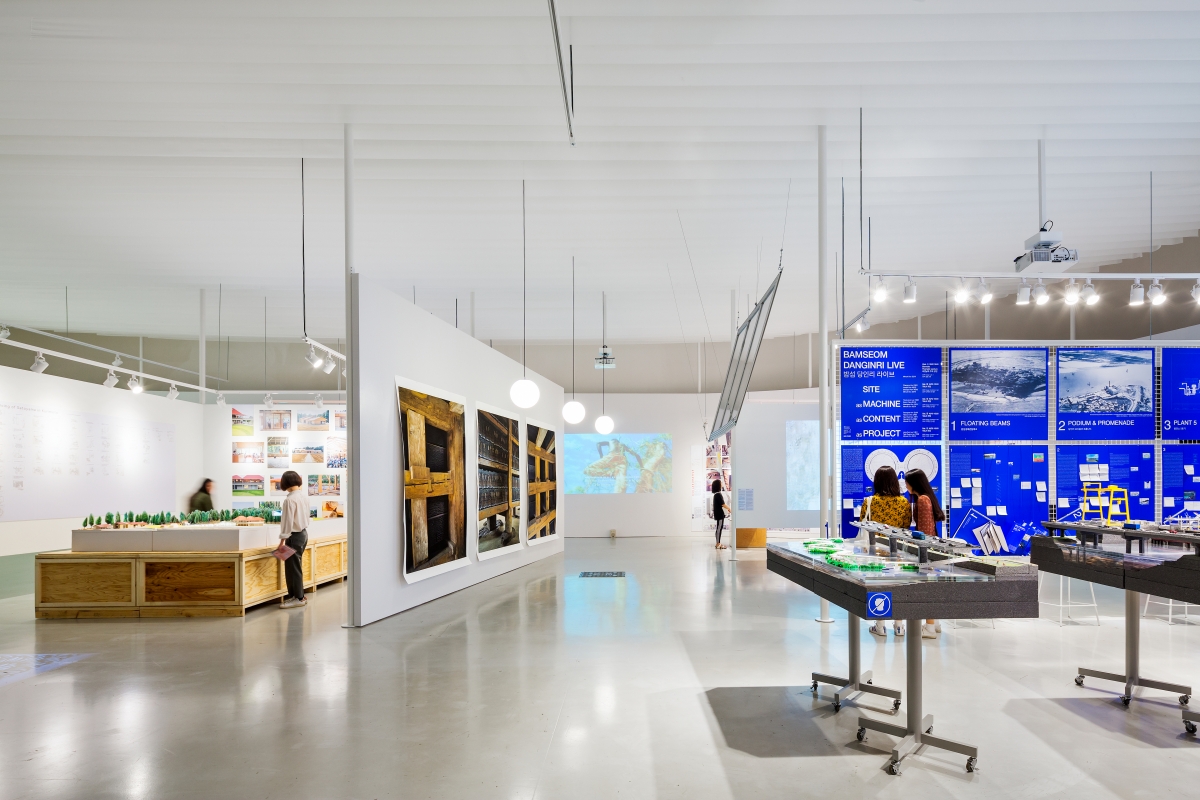
Thematic Exhibition (DDP) (©Kim Taeyoon / Image courtesy of Seoul Biennale of Architecture and Urbanism)
Thematic Exhibition: Exploring a New Collective Typology
The curator of the thematic exhibition Beth Hughes (head of Architecture, Royal College of Art) noted that this exhibition is a place for exploring ‘how modes of collective practice and action can challenge the current paradigms of development of our cities and offer resistance to the dominant systems of spatial production’. Participants in the 48 invited teams present works that interpret the extensive theme of the Collective City based on their individual perspectives and methods. The members consist of experts from numerous fields, who are not only architects but also photographers, designers, theorists, and directors. So, here, one can glimpse many different perspectives and ways of looking at the Collective City. Some works focus on the current status of architecture and urbanism in Korea. Amid.cero9 (Cristina DÍaz Moreno, Efrén GarcÍa Grinda) suggests a future housing typology, using the motif from jjimjilbang (Korean dry sauna) culture. It argues that space such as jjimjilbang, which are not called anyone’s own but rather shared by unspecified individuals, will replace the house with traditional meaning. Mass Studies (Park Kisu, Cho Minsuk, Kang Junkoo) introduces ‘Bamseom Danginri Live’, the winning project in the design competition. It is a project that accumulates and conveys each diverse and independent aspect of its creation, such as modern industrial heritage, thermal power plant, art space, and nature. It presents a huge architectural model that is consisted of three parts along with video and panels. Most particularly, the model achieved a far-reaching impact. Although some people are saying that analogue media, such as physical models, drawings, and panels are becoming less important for recent architectural exhibitions, intuitive communication and the delivery of information by actual models remains strong. The 1,800×3,000×975mm-size model, built on a 1:100 scale, contained a lot of information, including the use of waterfront space, the circulation plan, and the new features of existing buildings; all of which was crowded with audiences who wanted to observe the project more closely. The medium of photography was also valued; the photograph of Tripitaka Koreana Jangseogak Library taken by Bas Princen was popular. Three clear photographs vividly depicting the texture of wood, hung on the wall side by side, are on a scale of 2×2m. Moreover, there are works that have redefined the meaning of information collection. The Open Workshop introduces archives from each period. From the collection of old books to those more endangered contemporary species that we need to preserve, to the documentation of key energy sources and preservation of data without physical form, this project represents research approaches that study what types of information have been collected historically and how the spaces that collect this information have been and continue to be conceptualised and illustrated. Alongside this, Dogma (Pier Vittorio Aureli, Martino Tattara) and New Academy have dug down into the real present problems faced by the city. To combat the shortages in urban housing, they suggested a low-cost residential space as a prototype that can be located anywhere in London, Brussels and Helsinki. The distinction of this project is that the construction method is detailed in an accessible, manual booklet so that anyone can execute the design instead of stopping at the stage of having an idea. Keller Easterling (professor, Yale University)’s online platform for migration ‘Many’, the records of Dheisheh Refugee Camps collected by DAAR (Sandi Hilal, Alessandro Petti), and the video recordings of climate-change-related protest collected by Kadambari Baxi will be on display in the Design Exhibition Hall and Design Pathway in DDP. The thematic exhibition is full of new proposals to paint the future of the Collective City.
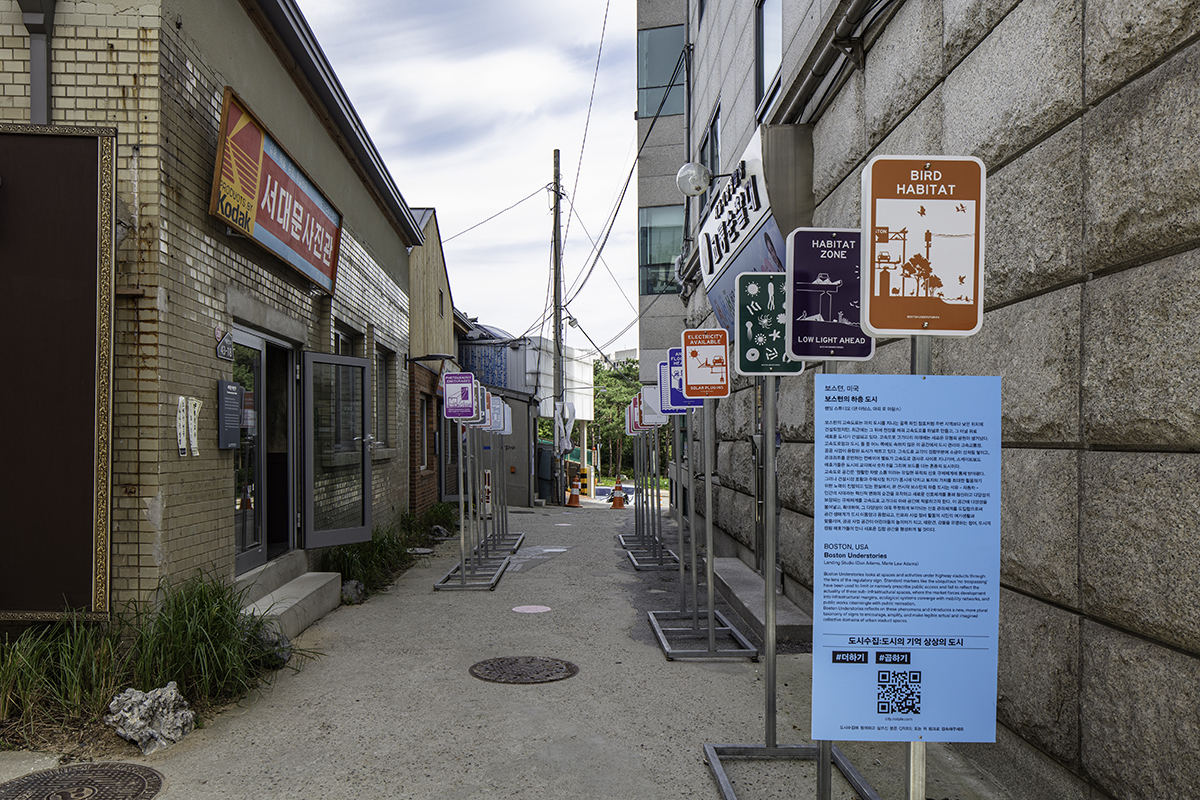
Cities Exhibition, Donuimun Museum Village (©Chin Hyosook)
Cities Exhibition: Looking at the Major Issues Facing Cities Around the World through 10 Keywords
The cities exhibition held in Donuimun Museum Village has a different starting point compared to the thematic exhibition. If the thematic exhibition is artist-centred, then the cities exhibition is location-centred. The co-curators of the cities exhibition, Yim Dongwoo (professor, Hongik University) and Rafael Luna (professor, Hanyang University), have broadly suggested about 80 international cities through which to address the major issues faced by each city under the theme of the Collective City. Interestingly, the major issues noted most frequently in each of the selected cities produced a universal series of keywords. Generated by using an inductive method of approach, the 10 keywords – Industry in the 21st Century, Rivers and Waterfront, Market Inheritance, Infrastructure, Participatory Urbanism, Density, Collective Typologies, Appropriations, Methods and Speculations, and Layers and Collective Memory – all indicate the shared contemporary discourse emerging in cities around the world. As the participating cities are located in 47 countries, including Asia, the Middle East, America, Europe, Africa and Oceania, the exhibition can compare what cities of diverse cultural backgrounds look like and what pending issues they encounter. ‘While other biennales are central to design culture in the West, the Seoul Biennale includes and celebrates architects from non-Western countries, including Venezuela and New Zealand’, Yim said, stressing the identity of the cities exhibition as one based upon diverse and neglected cultures. It is noteworthy that the exhibition booths have been fragmented into 10 different buildings in Donuimun Museum Village, just as the participating cities are scattered all around the world. Donuimun Museum Village was used as a venue for the thematic exhibition during the past Seoul Biennale, while this year it has been used as a venue for the cities exhibition, deepening the relationship between exhibition content and exhibition venues. Firstly, Manila in the Philippines deals with the limitations of infrastructure and public service provision, both of which are common to developing countries. As it is not sufficient to provide all services as much as needs, it introduces ‘ad-hoc infrastructure’ that exchanges help from individuals, with both provincial congress and private companies depending on the situation. Providence in the U.S. presents a new collective model that uses the urban void, while Amman in Jordan sheds light on the reversing of the flow of water in the Jordan River border area and the ensuing pace of desertification. Casablanca in Morocco focuses on the changes to urban space by era, Caracas in Venezuela deals with the versatility of the vast unfinished shopping mall, and Eindhoven in the Netherlands reinterprets the city street through black or white binaries, such as public and private. While experiencing these various city stories, audiences will find the QR code attached to each exhibition booth. When audiences scan QR codes, they can analyse their chosen cities and exhibitions based on the big data. This means that the exhibition has changed its attitude to audiences, helping them to actively engage and interact with the exhibition, rather than just appreciating the works in the exhibition hall. It also collects the data of other audiences, which devices another kind of Collective City and cities exhibition by accumulating these impressions or searches.
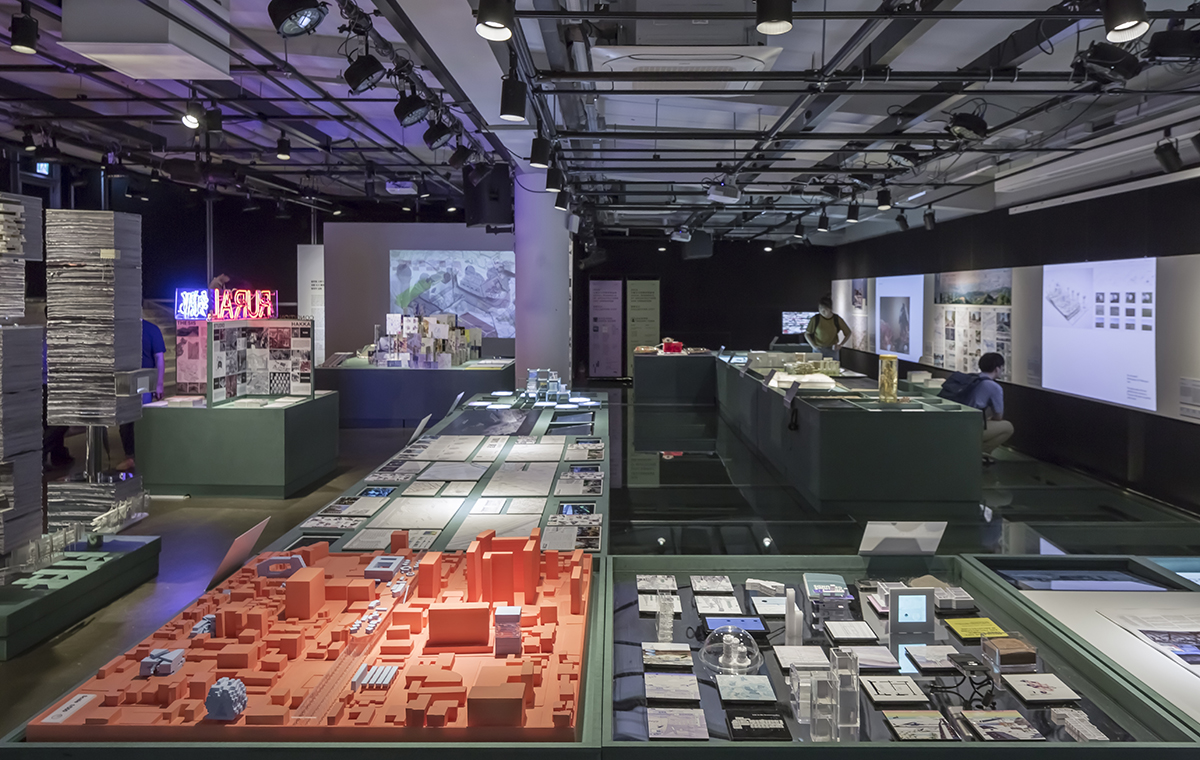
Global Studios, Sewoon Sangga (©Sergio Pirrone)
Global Studios: Collection and Collective Mass Reinterpreted by the Universities
While the global studio was organised as part of the public programmes for last Seoul Biennale, it has become one of four major exhibitions this year. Although the both purposes are the same, the researchers and scholars of the educational institutions here expand the theme of the Seoul Biennale and establish an important overarching discourse and vision. To that end, the global studio curator Choe Sanki (professor, University of Seoul) interprets the Collective City as having two meanings: ‘“Collection” from the formal perspective and “collective mass” from the social perspective, yet the two interestingly coexist. If a collection represents the formal byproducts of our cities, a collective mass represents the cause and process of creating such forms as well as social relationship of people’. These messages will be delivered through visual media such as drawings, models, photographs and videos, and not through language, so that the dual meanings and ambiguities can be effectively conveyed. The exhibition of global studios presents ideal and creative projects, not real physical cities or examples of architecture. Hongik University attends to the Sewoon Sangga area, where the exhibition is held. In the future, the scope of manufacturing will extend to contents as well as goods, and the production team also presents a new type of urban housing in response to this point, guided by the speculation that it will be a private or small group and not a large factory. The University of Manitoba, Carleton University, and University of Toronto reinterpret DNA sequences to create a specific unit by interbreeding specific features of urban spaces and architectural elements found in each city and experimented with implanting them into Seoul. The University of Pennsylvania has crafted proposals that respond to a changing environment linked to the seasons and elements, water, air, and animals, quite apart from human-centric design. The global studios, which include 43 domestic and foreign universities, including Kuwait University, Royal College of Art and Harvard University, present their own scenarios for cities.
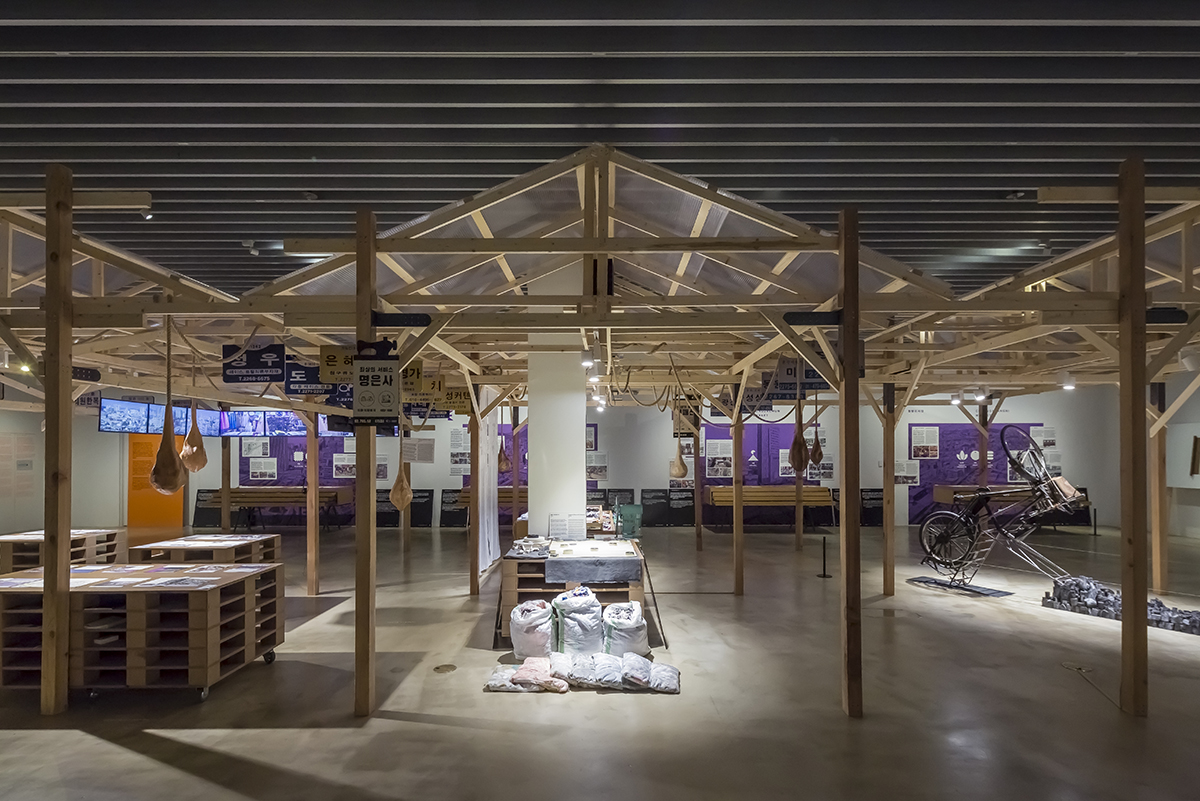
Live Projects, Seoul Museum of History (©Sergio Pirrone)
Live Projects: A Traditional Market Regenerated
Live Projects curator Young Jang (principal, Wise Architecture) draws a wide range of themes of Collective Citiy into the marketplace as a distinctive city element. He interprets the origins of the Collective City as a market: ‘People exchange things, regularly set a date for the exchange of goods, then markets are created, accommodations are also created, banks, plazas are added’, calling attention to the functions of the market in the passage of urban development. The live projects consist of two parts. First of all, the exhibition, The ‘Collective Market’ at the Seoul Museum of History, reveals how the modern marketplace inside the four gates of Seoul began and developed into what it is today through drawing, photography, installation works and sound. And in fact, the market where people can buy and sell goods ‘Seoul Market’ is at the pedestrian deck of Sewoon Sangga to Cheonggye-Daerim building. Pavilions installed by students of the Union of Architecture University Students (UAUS) and Seo Seungmo (principal, Samuso Hyojadong) have been set up in various locations and used as stalls whenever markets are opened. Where other exhibitions use the word ‘participatory form’, the ‘Seoul Market’ breaks away from the typical exhibition format and invites people to engage with a completely different kind of programme.
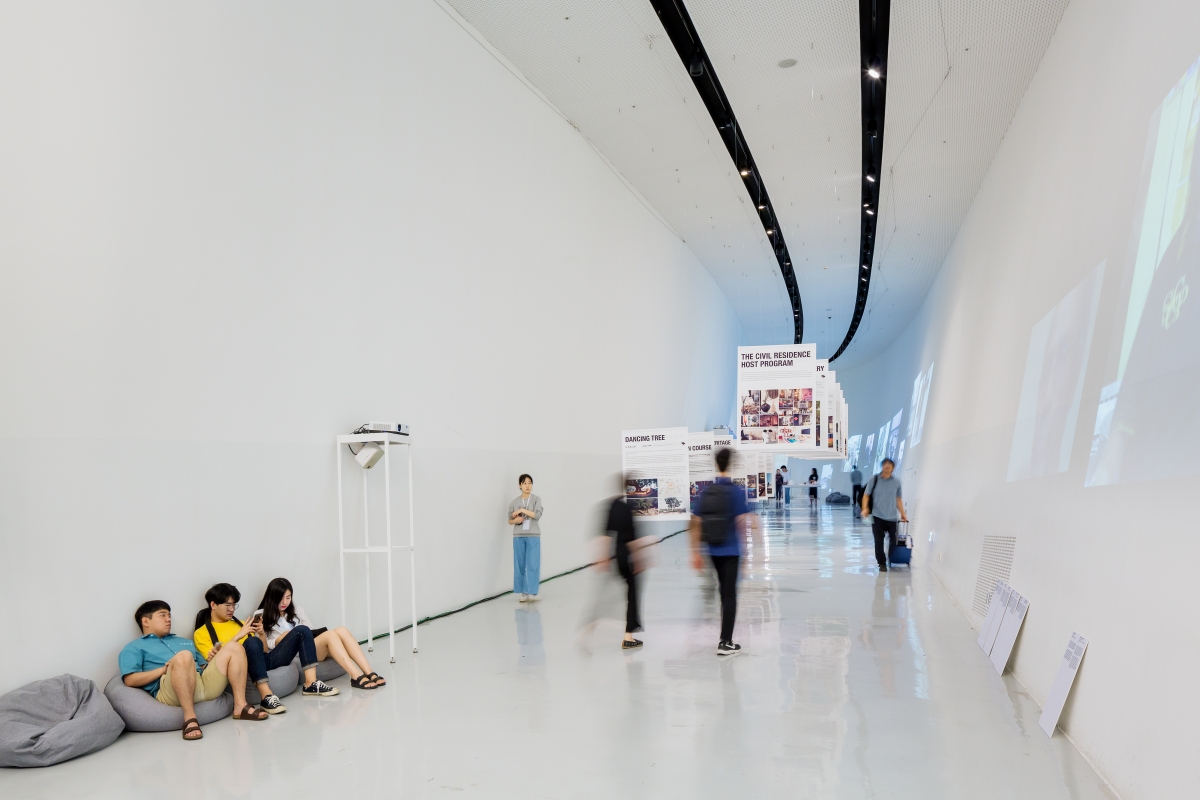
Thematic Exhibition (DDP) (©Kim Taeyoon / Image courtesy of Seoul Biennale of Architecture and Urbanism)
Global Platform, Participatory Exhibition, and Sustainable Biennale
The Seoul Biennale 2019 will not hold a separate award ceremony like it did two years ago.
The intention is not to depreciate the opinions of many cities and artists, but the attitude
differs from the Venice Biennale and their prestigious Golden Lion award. There are also
no Star Architects participating in the biennale. Instead of crafting a stage on which only
one person enters the spotlight, these strategies are in line with the intention of becoming
a platform that contains various voices from across various cultures. In fact, about 180 organisations from 80 cities around the world participated in this year’s biennale, and it is
evaluated as a success when compared to the 120 agencies from 50 cities of two years ago.
As critics were quick to point out that the first Seoul Biennale had a high entry barrier for
audiences, due to its difficult display configurations, this year it has set up a number of tools
to help audiences understand exhibits and to encourage participation. First of all, to reduce
the gap between the content of the biennale and enable the understanding of audiences, the
exhibition actively operates an hourly docent programme, and provides audio guides through
mobile phone applications, QR codes and big data. In addition, participatory events, which
promote interest in architecture and urbanism outside the confines of the biennale, have
been multiplied. First of all, they held photo and video contests before the biennale to collect
the views of local people on public spaces in Seoul. During the biennale, special lectures
and themed lectures by curators and participating artists, tour programmes conducted by
regions and themes, and films and videos were all put on for the benefit of non-experts so
that they could enjoy urban and architectural content in an accessible and friendly way.
Aside from the technical strategies, the most urgent issue for the Seoul Biennale will be the
establishment of the Biennale Foundation itself. Ironically, so far, no independent foundation
or institution has been established solely for the Seoul Biennale. Therefore, the Seoul Biennale
is co-hosted by the Seoul Metropolitan Government and the Seoul Design and Culture
Foundation, while the administration will be handled by the newly-installed Seoul Biennale
Secretariat for this year’s event only. Since the organization operates temporarily, there will
certainly be limits to the accumulation of data and know-hows. The Seoul Biennale will end in
November, but hopes to equip Seoul Biennale with a more sustainable system in the near future.





